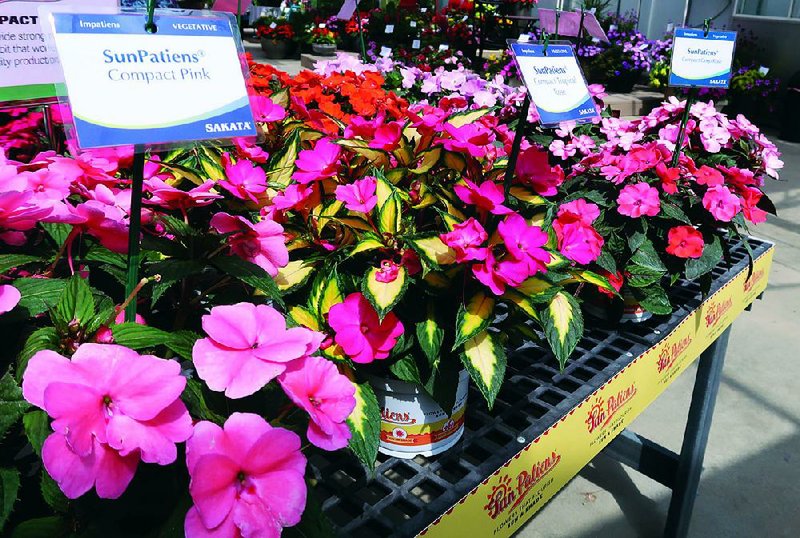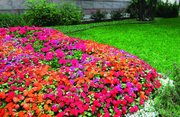JULY
We have already had more hot days this summer than we did all of last summer.
Some areas have been getting regular rainfall, while others are bone dry.
Every year about this time, having a rain gauge comes in handy, as does knowing how much water your garden needs. There is no set formula that works for every garden. Factors that apply include what you are growing, how much sunlight the plants get, what type of soil or bed they grow in and how much rain falls.
Plants in containers are always going to dry out faster than plants in the ground. Soil-less mixes usually dry out faster than garden soil. Mulching will definitely help.
Get to know your garden and your plants, and do what works best for you. Early morning deep watering is best, but you have to work with your schedule.
Frequent watering leaches nutrition from soil. If you are growing trees and shrubs, they should do fine with one application of fertilizer per year -- usually applied in the spring.
Annual flowers and vegetables need the most nutrition. Frequent, light applications are best to avoid burning. When temperatures are high, water your plants well before fertilizing, and then water that fertilizer in.
• Vegetable gardens are producing at their peak right now. Peppers, squash, tomatoes and eggplant are coming in. Harvest regularly to keep them setting more fruit.
• It is not surprising for tomatoes to slow down production during hot weather. When temperatures exceed 95 during the day and/or stay above 75 degrees at night, flowers quit setting fruit. Existing fruit is slower to ripen. Keep your plants evenly watered and fertilized, and as soon as there is a break in the weather, they should rebound and begin to produce again.
• If you have plants that are on their way out, harvest what you can and replant with new tomatoes or other vegetables. The key is to keep them watered to get them established -- there is a lot of gardening season left to grow in.
• If you still need some color in your garden, there is plenty to choose from at local nurseries and garden centers. Tropical flowering plants are still arriving and this is their season -- they love it hot and humid. Water and fertilize weekly, and they will bloom nonstop.
• Many summer blooming perennials are in their prime, from the dinner-plate size blooms on hardy hibiscus to colorful coneflowers, gaillardia, coreopsis and rudbeckia.
• Summer annuals are also flowering well, where they have been watered and fertilized. Lantana, vinca, Cuphea, zinnias and ornamental sweet potatoes thrive in hot weather. Many of these flowers need dead-heading after bloom to keep going all season.
• Scout your garden frequently for weeds, insects and diseases. We have seen aphids, scale, white flies and spider mites, along with stink bugs, caterpillars and more.
• Know which insects are good and which are bad. If you are trying to attract butterflies, then don't kill the caterpillars that are eating your milkweed or dill -- you want to see the butterflies. But if tomato hornworms are chomping on your tomatoes or corn earworms are eating your corn, you want to stop them.
• Diseases can spread quickly from plant to plant. We have had quite a few reports of rose rosette on roses, septoria leaf spot on tomatoes and some powdery mildew is showing up.
• We have had more reports of herbicide damage to ornamental landscape plants this year. Be sure to read and follow the label directions if you are applying herbicides to your lawn and you have landscape beds nearby or trees in the lawn. Some of the chemicals can cause problems. If you have problems in your landscape, properly identify what is happening. Take or send a plant sample or good pictures to your local county agent. The earlier you spot a problem and identify it, the sooner you can handle it.
• If you aren't growing a vegetable garden or raising your own fruit, visit one of the many farmers markets in the state. Besides all the wonderful fresh vegetables, they have blueberries, blackberries and peaches. Eat local and fresh!
PLANT OF THE MONTH
Impatiens are the most popular flowering annual for the shade in Arkansas gardens. Native to Tanzania and Mozambique, they come in a wide range of colors and will grow and bloom until frost in light to heavy shade, provided they get ample moisture and fertilization.
But today impatiens are not just shade plants. Newer to the market are the Sunpatiens, large flowered annuals that will grow in full sun to light shade. (In deep shade, they are not as full-flowering.)
Unlike some of the earlier, much touted sun-loving varieties, which required that you stand next to them with a garden hose, these will tolerate slightly drier conditions than most impatiens. Some gardeners still prefer to give them a bit of afternoon shade, but with just average moisture and fertilization, Sunpatiens have been performing quite well across the state.
Each year we see a larger color palette. With larger foliage and flowers than common impatiens, these can make a dramatic color splash in the garden.
Regardless of your light conditions, there is an impatiens plant for any garden.
Janet B. Carson is a horticulture specialist for the University of Arkansas Cooperative Extension Service.
HomeStyle on 06/30/2018

